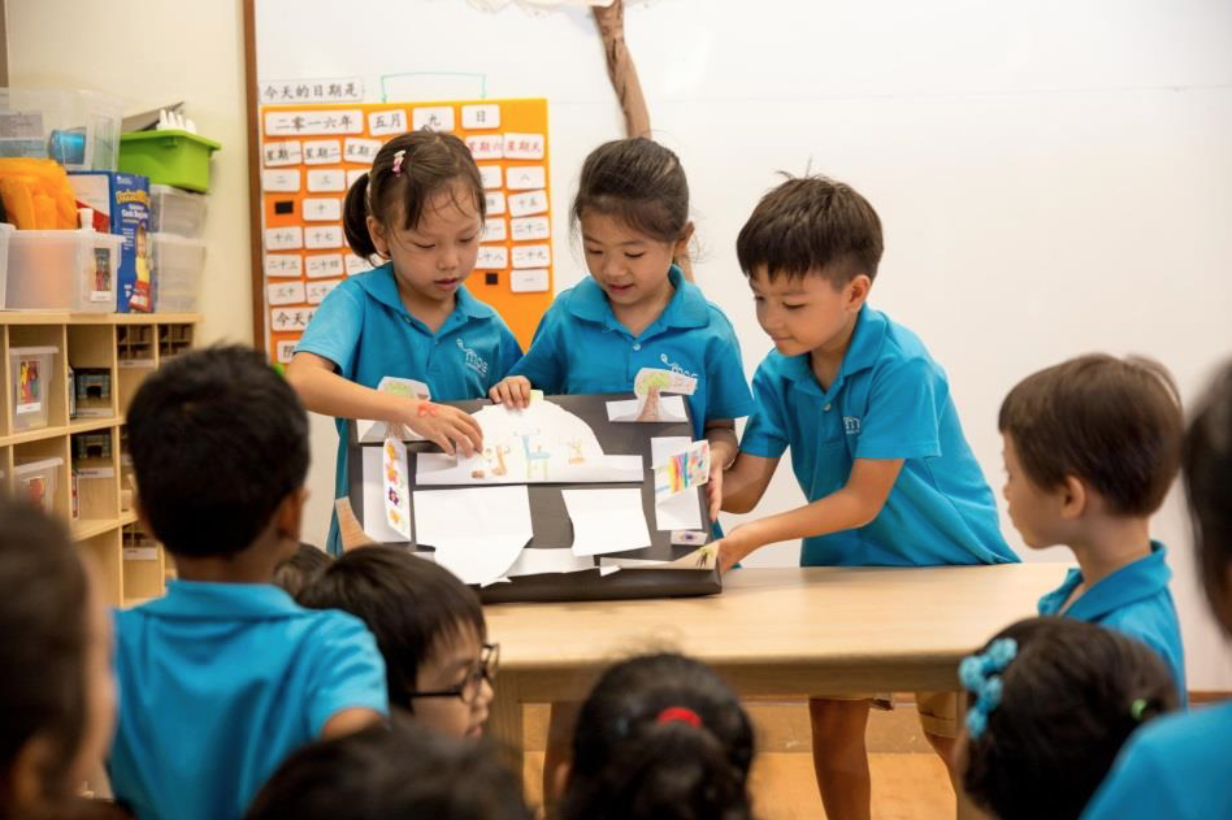"Flowers and Fishballs" • MOE Kindergartens
Overview
Learning Areas |
Learning Goals |
Aesthetics and Creative Expression (A&C) |
LG3: Create art and music and movement using experimentation and imagination |
Discovery of the World (DOW) |
LG1: Show an interest in the world they live in LG2: Find out why things happen and how things work through simple investigations |
Social and Emotional Development (SED) |
LG4: Communicate, interact and build relationships with others |
| Refer to the Nurturing Early Learners (NEL) Framework, pp. 65 to 107, for more information on the learning areas and learning goals. |
|---|
Learning Objectives
- Find out more about the people and places in their neighbourhood.
- Make decisions as a class on the places they would like to have in their neighbourhood.
- Work together to create a 2- or 3-dimensional model of their neighbourhood.
#1 Finding out about places in their neighbourhood
- Go on a neighbourhood walk OR
- Show photographs of places in their neighbourhood
- Talk about the places in the neighbourhood with your children.
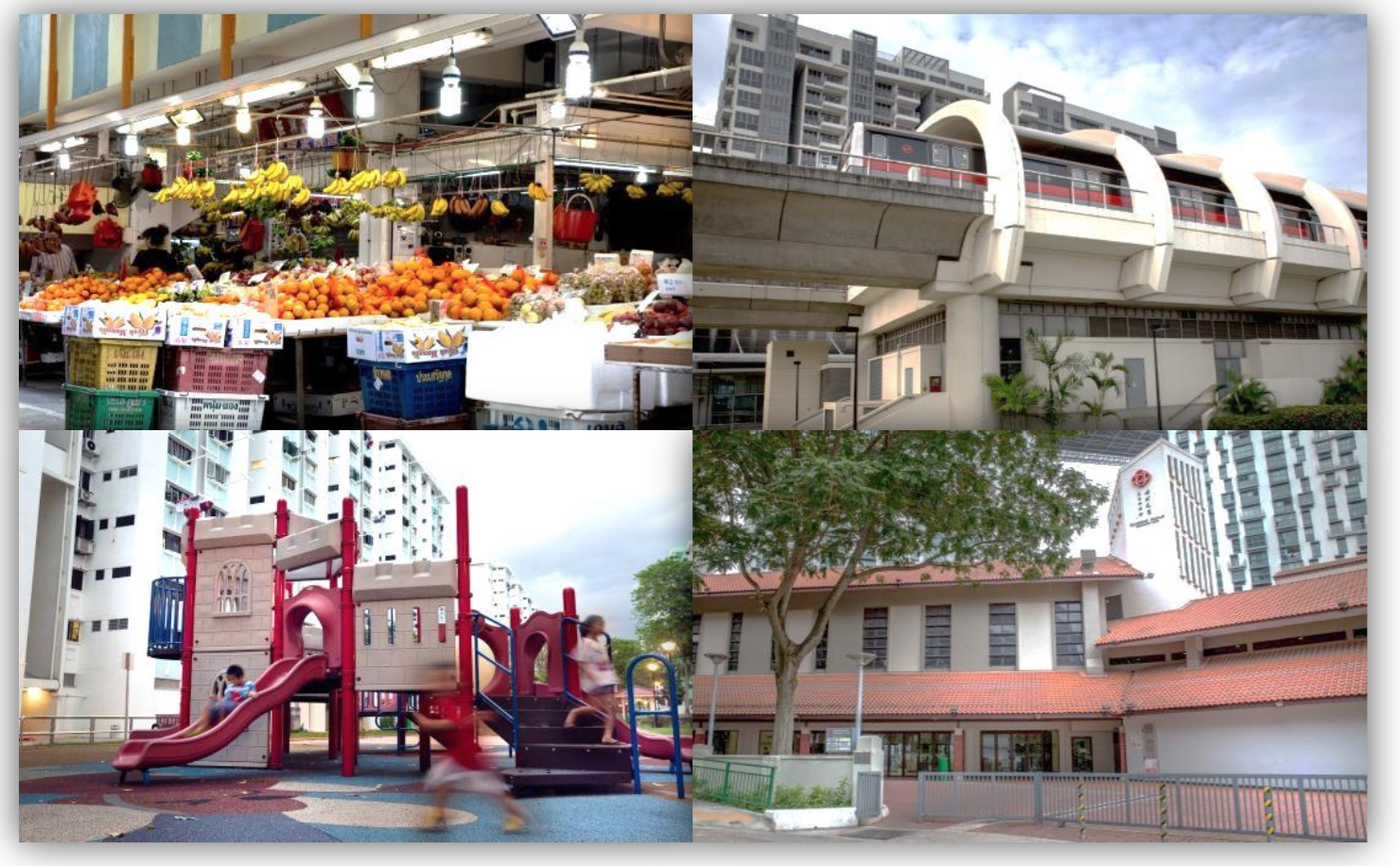 Examples of common places in a neighbourhood
Examples of common places in a neighbourhood
- Using photographs as visual cues to help children recall what they had observed
- Asking questions to facilitate the discussion
|
What types of questions are you asking? Using open-ended questions will help to engage children in discussion and sustain the conversation. Refer to the Nurturing Early Learners (NEL) Educators’ Guide, Volume 1 pp. 58 to 60, for more information on using questions. |
- What is this place?
- What can people do at this place?
- Why is it important to have a place like this in your neighbourhood?
#2 Planning their neighbourhood
| Providing opportunities for children to reason and make decisions help to develop their logical thinking skills. |
- Places they would like to have in their neighbourhood (limit the number of places to help them reason and make decisions)
- Where they would like these places to be in their neighbourhood
- Create a neighbourhood map.
- Limit the number of “empty” spaces on the map.
- Encourage your children to talk about and decide on the places they would like to have and where these places should be in their neighbourhood.
- Refer to the categories that arose from the class discussion (e.g., places to buy food, places to have fun etc.) to help your children make decisions.
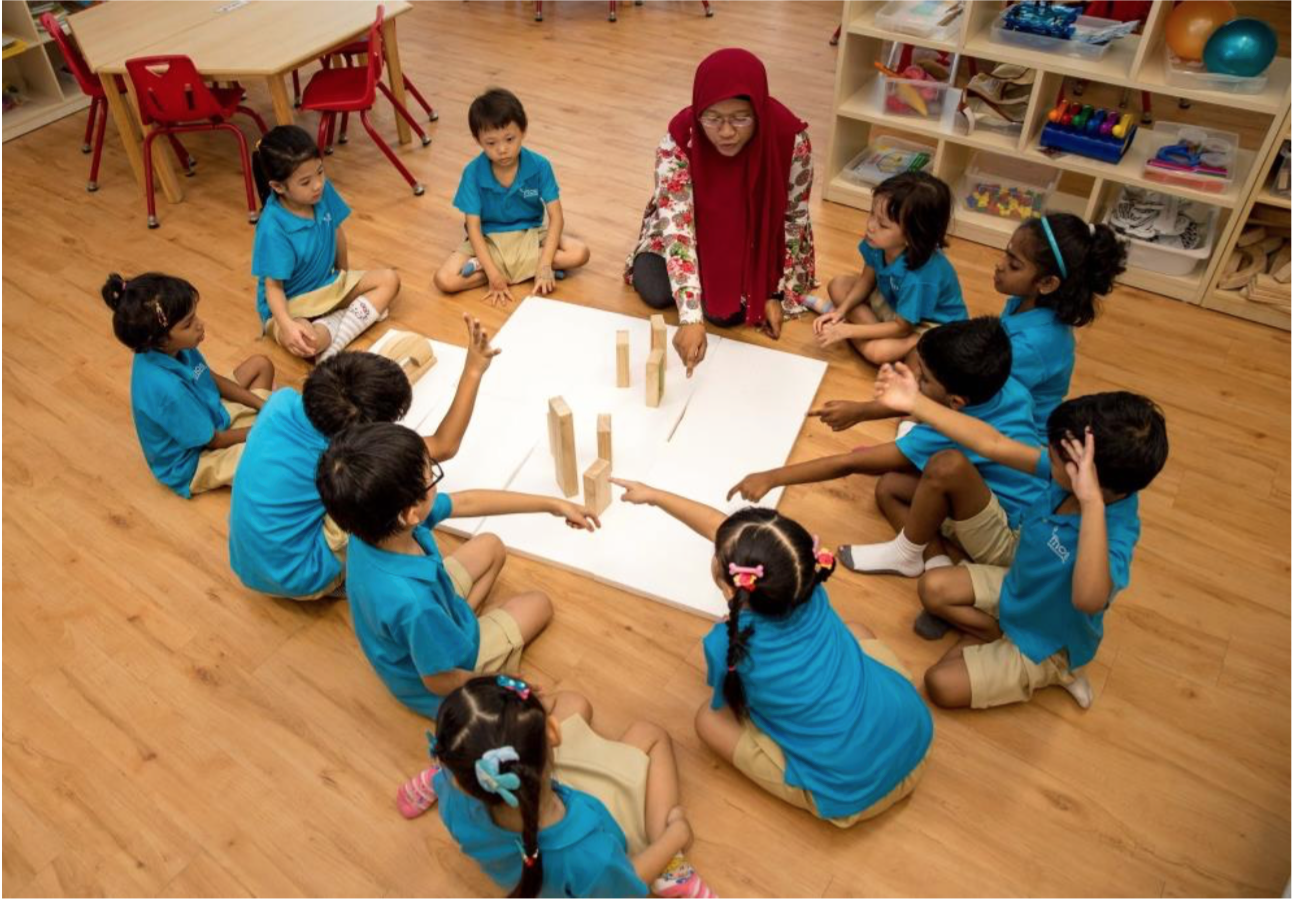
#3 Creating their neighbourhood
Let your children’s creativity flow by creating a model of their neighbourhood using different art and recyclable materials!
How?
- Get your children to work in small groups.
- Have each group work on one place in their neighbourhood by:
- Drawing / Painting OR
- Using recyclable materials to make a 3-dimensional model
How can you facilitate group work in your classroom? You can:
|
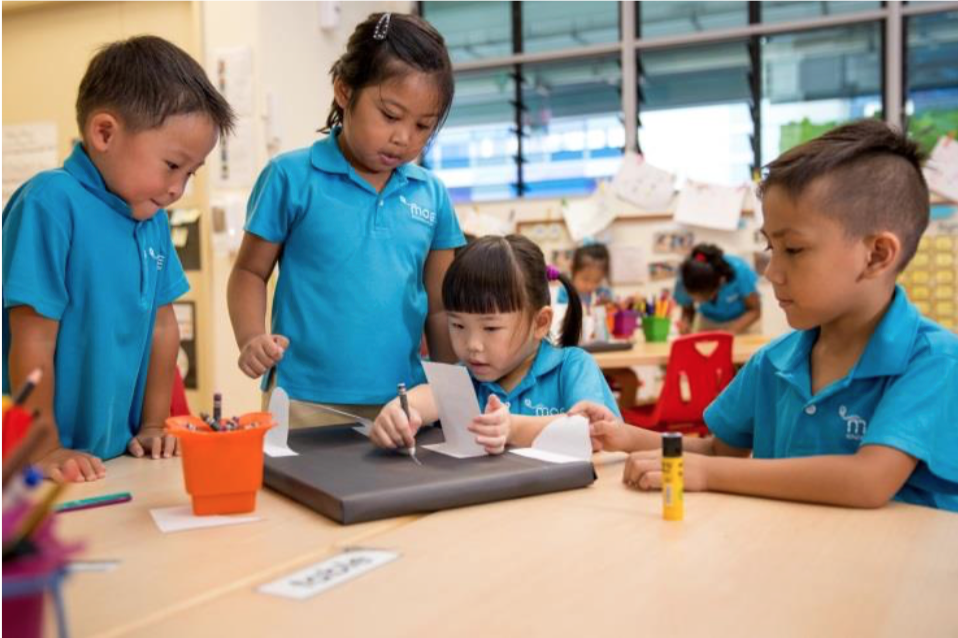 Children working in small groups | 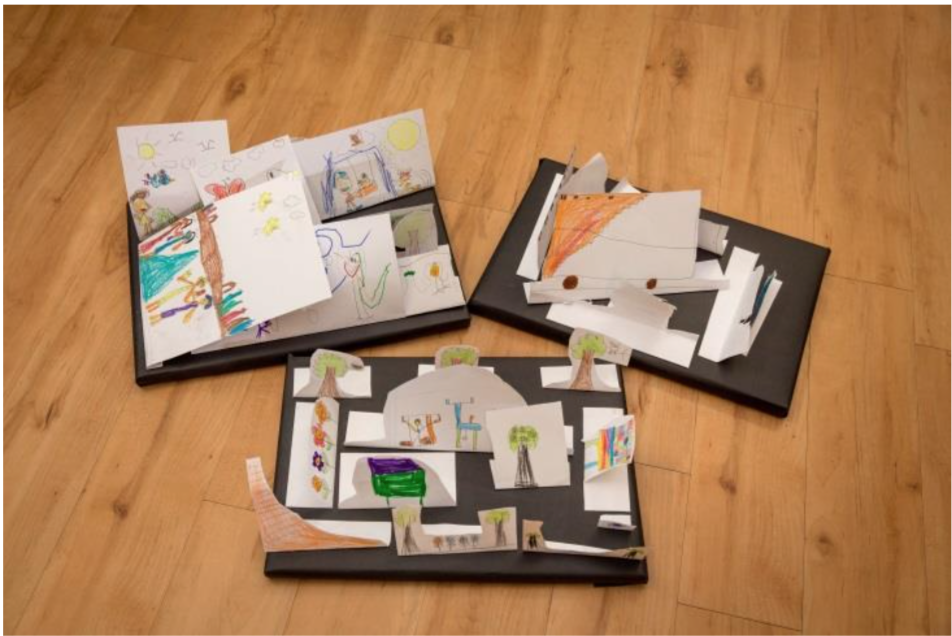 Models of their neighbourhood |
#4 Presenting their neighbourhood
- Places in their neighbourhood and what people do at these places
- Why they chose these places and locations for their neighbourhood
